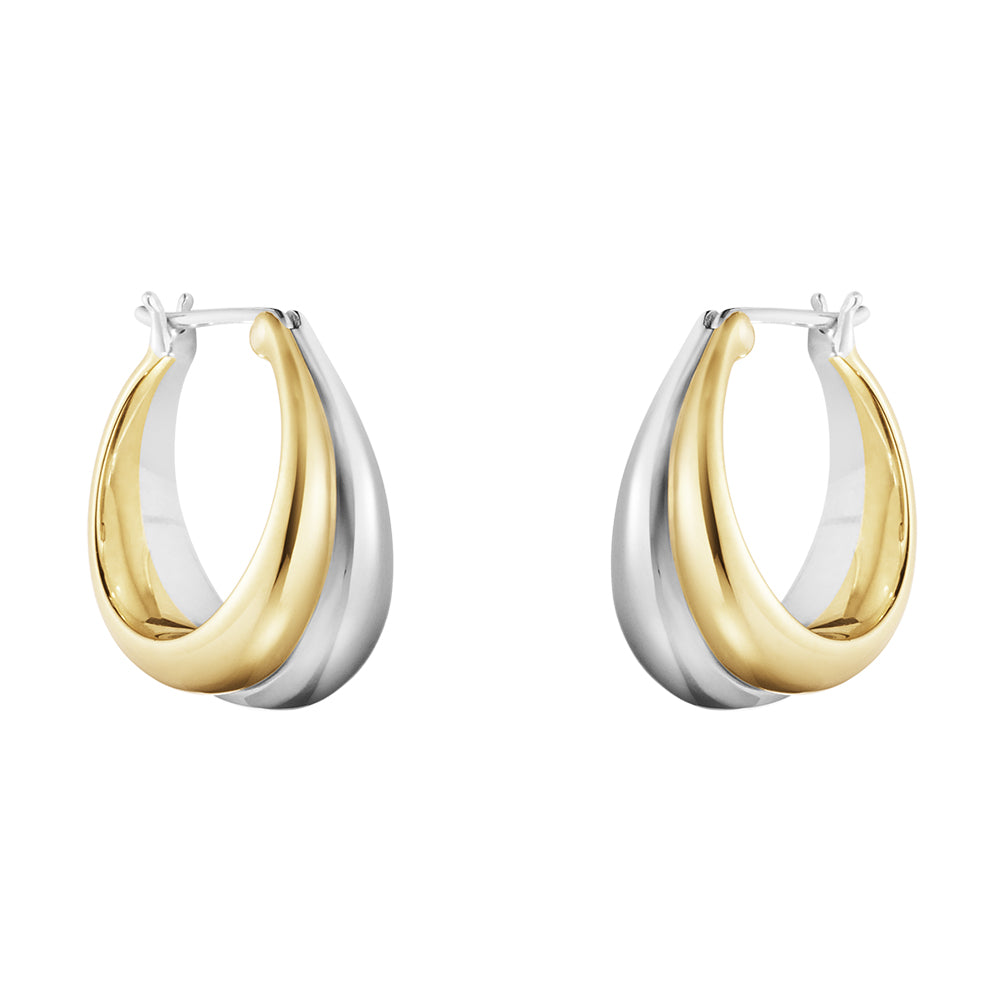
How to Calculate Ring Size: A Complete Guide
Introduction
A perfect ring fit is more than comfort—it is confidence, elegance, and lasting value. This guide unlocks the science and secrets of sizing, helping you choose jewelry that honors beauty, love, and legacy—because the right fit is where the story truly begins.
Why Ring Size Matters More Than You Think
A ring is intimate. It rests not only against skin but also against memory. A size too tight restricts circulation; a size too loose risks slipping away forever. The American Gem Society (AGS) emphasizes that an ill-fitting ring can also shorten the life of the metal itself—micro-fractures form from constant resizing, weakening the shank (AGS Jewelry Care Guidelines).
The human finger is not a static form—it subtly changes in size over the course of a day. Swelling of up to half a size can occur depending on temperature, hydration, and sodium levels (Cleveland Clinic). A ring that slips on easily in the morning may feel tight by evening. Recognizing these physiological fluctuations is key to accurate sizing.
Beyond biology, fit influences psychology. Research in consumer psychology suggests that tactile fit—how closely an item conforms to the body—can significantly influence perceived luxury, even when material quality is identical. A ring that feels natural and effortless often seems more valuable than one that fits poorly. In addition, insurance companies like Jewelers Mutual report that improperly sized rings account for a significant portion of lost jewelry claims. Thus, calculating ring size precisely is not a trivial matter—it is both a safeguard for emotional significance and financial investment.
Anatomy of a Ring Size: The Science Behind the Circle
Most people assume ring size is just diameter or circumference. In truth, it is a biometric measurement influenced by tissue composition, bone structure, and skin elasticity.
Joint-to-Base Ratio: Many fingers are wider at the knuckle than at the base. Jewelers must account for whether a ring needs to slide past the knuckle but rest snugly below.
Thermal Expansion: Metals expand when heated. A gold ring can widen by 0.1 mm in hot conditions, subtly altering comfort.
Dominant Hand Effect: Studies in The Journal of Hand Surgery show that dominant-hand fingers are often slightly larger due to muscle development and microtrauma.
These micro-factors explain why two people with identical finger circumferences may require different sizes.
What is often overlooked is skin compressibility. Softer tissue allows a slightly tighter band to feel comfortable, while firmer tissue requires more space. Even nail length subtly affects measurement, since short nails allow fingers to spread differently than longer nails. Studies published in the British Journal of Dermatology confirm that skin hydration significantly improves elasticity, which means even recent lotion use can subtly affect ring measurement. When calculating size, one is essentially measuring a living, responsive system rather than a static cylinder.

Standardized Ring Sizing Systems Around the World
Ring sizes are not universal. The U.S., U.K., Japan, France, and Switzerland each have distinct systems:
U.S. & Canada: Numeric scale (sizes 3–13.5, each increment = 0.4 mm in diameter).
U.K. & Australia: Alphabetical scale (A–Z+).
France & Russia: Based on circumference in millimeters.
Japan & China: Numeric scale, but offset from U.S. measurements.
For cross-border shoppers, misinterpretation is common. According to the Gemological Institute of America (GIA), over 20% of online ring returns are due to incorrect size conversion.
The complexity grows with regional nuances. For example, Italian jewelers sometimes adopt hybrid scales, while Swiss ateliers traditionally use half-step increments for precision. Global e-commerce platforms like Blue Nile and James Allen now provide interactive converters, yet subtle errors remain. A French size 54 is not a direct equivalent to a U.S. size 7; width and manufacturer tolerances alter equivalence. For travelers, it’s wise to know one’s size in millimeters of inner circumference—the most universal constant across systems. This millimetric anchor ensures consistent translation across borders, avoiding disappointment in cross-cultural engagements.
Professional Methods: The Jeweler’s Arsenal
Ring Sizers and Mandrels
Professional jewelers typically begin with ring sizers—a set of graduated metal or plastic bands that clients try on to estimate comfort and fit. However, this step is only preliminary. To ensure accuracy, jewelers confirm the result using a mandrel, a calibrated stick (plastic or steel) on which the actual ring is measured.
Industry guides note that while both plastic and steel mandrels exist, steel maintains calibration far better over time, whereas plastic can warp or wear with repeated use. Moreover, mandrels themselves come in two varieties: tapered and cylindrical. Tapered versions can yield slight variations depending on how far the ring slides down, while cylindrical mandrels provide a truer read. High-end jewelers often recalibrate their mandrels against laser-etched standards to preserve millimetric precision.
Digital Calipers and 3D Scanning
For decades, jewelers relied on digital calipers, precise instruments capable of measuring diameters to 0.01 mm. These tools remain valuable for quick checks, yet they capture only static cross-sections of the finger. What they cannot account for are subtler realities—joint asymmetry, tissue compressibility, or the way skin shifts under pressure.
Enter 3D hand scanning, now adopted by modern ateliers. This technology generates a full digital replica of the finger, recording not only diameter but also joint contours and surface topography. According to the International Gemological Institute (IGI), luxury retailers using such scans report a 30% reduction in resizing requests, as the method minimizes human error and anticipates comfort over time. Some brands even archive scans, enabling remote resizing years after the initial fitting.
Together, digital calipers and 3D scanning illustrate the evolution of precision—from linear measurement to holistic biometric mapping.
Trial Bands
Luxury houses often provide “comfort-fit trial bands,” allowing clients to test different widths. Wider rings require slightly larger sizes because they compress more surface area of skin.
Trial bands are not only for engagement rings. Professional athletes, for example, often require custom widths to accommodate swelling from intense activity. Jewelers in Switzerland report creating specialized sizers for mountaineers, whose hands adapt to both altitude and cold. Thus, professional measurement is not static—it adapts to lifestyle, environment, and usage.

How to Calculate Ring Size from Measurements
Once you have measured either the inner diameter or circumference of the finger (or an existing ring), the next step is to calculate the actual ring size. This is where raw numbers transform into standardized sizing systems used by jewelers worldwide.
The Formula
-
Circumference (mm) ÷ π (3.14) = Diameter (mm)
-
Diameter (mm) × π (3.14) = Circumference (mm)
This simple conversion ensures you can move between measurements depending on which tool you used.
Example Calculation
If your string measurement shows a circumference of 55 mm:
-
Divide by π → 55 ÷ 3.14 = 17.5 mm diameter
-
Check the chart → U.S. size 7.5 (approx.)
How to Measure Ring Size at Home—Accurately, Not Approximately
The String-and-Ruler Myth
Countless lifestyle blogs suggest tying a string around your finger, as if fabric could rival a jeweler’s tool. The reality? Fibers stretch, compress, and betray you with half-to-a-full size of error. If one insists on this method, dental floss—resilient and slick—behaves far better.
A wiser approach is repetition: measure three times, on three different days. Always record the largest result. Rings should embrace the finger, never strangle it.
Printable Ring Sizers—Illusions on Paper
A sheet of paper feels harmless, yet printers lie. PDFs shrink or expand by a fraction, and suddenly a ring size is lost. The safeguard? Compare with a credit card—always 85.6 mm wide—to ensure scale.
Modernity, however, has improved the game. Luxury jewelers now release augmented reality apps, letting you place a finger on your phone and see its digital outline. These apps are not flawless, but when cross-checked with a physical tool, they whisper surprisingly accurate truths.
Temperature and Timing
A finger is not static; it swells, contracts, and reflects the body’s rhythms. Mornings, after sleep, leave fingers smaller; exercise, larger. Evening, in a calm room at 68–72°F, is the golden window.
Medical voices like the Mayo Clinic confirm: fluid retention peaks at night, making twilight measurements the truest mirror of daily wear.
The Borrowed Ring Technique
Sometimes the best clue is already on hand—an existing ring. Slip it onto a calibrated mandrel, and the truth reveals itself. Yet time leaves traces: wedding bands worn for decades may have ovalized, their once-perfect circle pressed into an ellipse by years of love and labor.
In such cases, jewelers follow a scientific compromise—measure both the widest and narrowest diameters, then take their average. The European Federation of Jewellery endorses this as the fairest reflection of reality.
Hidden Influences Few Consider
Here’s where science meets subtlety—details that most guides overlook.
Environmental Shifts:
Altitude plays a role: at high elevations, reduced oxygen can trigger mild swelling, which is why mountaineers often report tighter rings during expeditions. Seasons also leave their mark—fingers tend to shrink in winter and expand in summer, with an average fluctuation of up to 0.75 size. Even a single salty meal can cause temporary swelling that lingers for 24 hours.
Biological Rhythms:
The Journal of Women’s Health notes that hormonal cycles—especially shifts in estrogen and progesterone—affect fluid retention, subtly altering ring size throughout the month. Medications such as corticosteroids, antihypertensives, or certain antidepressants can produce a similar effect, often unnoticed until a ring suddenly feels snug.
Lifestyle Factors:
Handedness adds another layer of complexity. A tennis player’s racquet hand, for instance, may measure up to half a size larger due to repetitive strain and micro-swelling. Such influences remind us that sizing is not static—it is a dialogue between body, environment, and daily habits.
Recognizing these hidden forces transforms ring measurement from guesswork into applied science.

Cultural and Historical Dimensions of Ring Fit
From antiquity to the digital age, the way people approached ring sizing has always reflected more than just geometry—it is an interplay of symbolism, practicality, and cultural belief.
In ancient Egypt, rings symbolized eternity, but precision was secondary; braided reeds or leather bands allowed flexibility in fit. By Victorian England, sentiment dictated style—lovers often wore “guard rings” to secure heirlooms that were slightly loose, merging romance with function.
Moving into the present, precision carries a new layer of secrecy. According to The Knot Jewelry Trends Report 2023, nearly half of couples discreetly determine ring size to preserve the drama of a surprise proposal, often relying on friends or trusted jewelers for covert assistance.
Yet across cultures, sizing has never been a purely technical matter. In 19th-century Russia, resizing a wedding band was viewed as a dangerous omen that might weaken the marital bond. By contrast, in parts of India, jewelers developed ingenious adjustable bands with hidden hinges—a tradition that persists in rural markets today.
Together, these practices reveal that ring sizing is as much about cultural storytelling and emotional meaning as it is about mathematical precision.
Romantic Narratives of Measurement
Ring sizing has always been more than arithmetic—it is the quiet choreography of love stories. Picture Daniel in Paris, carefully looping a ribbon around Clara’s finger as she sleeps, determined to preserve the surprise of his proposal. Or imagine a grandmother’s heirloom, its engraving softened by decades, resized by the family with reverence so that memory and fit remain intact.
Even today, these gestures persist in new forms. Friends may “borrow” a ring under the guise of admiration, or jewelers may casually note a size during a couple’s browsing session—all in service of protecting the magic of the moment. Whether in whispered secrecy or communal collaboration, each act of measuring becomes a thread woven into the larger fabric of romance.
Ultimately, the pursuit of a perfect fit is not just mathematics—it is poetry translated into metal, an invisible promise binding intimacy, surprise, and destiny.

Common Mistakes to Avoid
Even with the most precise tools and careful measurements, certain pitfalls can undermine accuracy. Many first-time measurers make the mistake of checking only once; repeating measurements 2–3 times on different days is essential to account for natural finger fluctuations.
Ignoring ring width is another frequent oversight—wider bands compress more skin and require slightly larger sizing to remain comfortable. Relying solely on online charts without proper conversion can also lead to miscalculations, especially when crossing between U.S., U.K., and European systems.
Environmental and physiological factors matter as well: swollen or dehydrated fingers, pregnancy, arthritis, or significant weight changes can permanently alter size. Jewelers often warn that ordering fixed designs like eternity bands without considering future adjustability can lead to regret. Discussing resize policies before purchase, particularly for high-value stones, ensures that your investment remains both beautiful and practical over time.
Why Precision Reflects Value
A well-sized ring is more than a matter of comfort—it safeguards both the jewel and its wearer. Proper fit ensures even distribution of pressure, reducing the risk of metal fatigue or stress points that could shorten the life of the band. According to the Gemological Institute of America (GIA), incorrect sizing can loosen settings and increase the risk of gemstone loss, particularly with diamonds or other precious stones.
While no single brand can guarantee eternal perfection, master jewelers often emphasize that a ring should feel as if it has always belonged to its wearer, seamlessly merging ergonomics with artistry. In this way, precise measurement becomes a form of preservation—protecting both the physical integrity of the piece and the sentimental value it carries.

Beyond Size: Comfort, Style, and Value
Ring profiles influence comfort as much as measurement: a comfort-fit ring with a rounded interior slides easily over knuckles, while a standard-fit ring with a flat interior feels tighter but traditional. Life events—pregnancy, arthritis, or weight changes—may necessitate resizing, making durable metals like platinum a practical choice.
Style also shapes sizing strategy. A vintage Art Deco band with intricate filigree cannot endure repeated adjustments, so an accurate initial fit is essential. Minimalist bands, by contrast, allow more flexibility. Calculating ring size is therefore both functional and strategic, preserving comfort, artistry, and the legacy of the piece.
Conclusion
To calculate ring size is to balance science, artistry, and emotion. It demands precision, respect for anatomy, awareness of subtle influences, and sensitivity to culture and romance. More than measurement, it is a ritual that protects memories, ensuring the jewel remains both comfortable and eternal.

FAQ
Q1: Can I measure my ring size at home accurately?
Yes—use non-stretch floss, measure at evening temperature, and cross-check with a printable chart calibrated against a credit card.
Q2: How much do fingers swell during the day?
Up to half a size, depending on hydration and heat.
Q3: Do wide rings need bigger sizes?
Yes. A 6 mm band may require 0.25–0.5 size larger than a 2 mm band.
Q4: What if my size falls between two options?
For most standard rings, sizing up slightly is safer, as minor reductions are usually easier than enlargements. However, intricate designs, eternity bands, or heavily set stones may limit resizing options, so always consult a jeweler before choosing your final size.
Q5: How often should I recheck my ring size?
Every 2–3 years, or after significant lifestyle or weight changes.
Call to Action
Your ring is more than an accessory—it is a personal archive of promises, milestones, and identity. A precise fit transforms it from ornament to second skin. Whether you are planning a proposal, celebrating an anniversary, or gifting yourself a symbol of self-love, let accuracy honor your story. Explore timeless rings designed for perfect fit and enduring elegance—because true beauty lies not just in brilliance, but in belonging.









